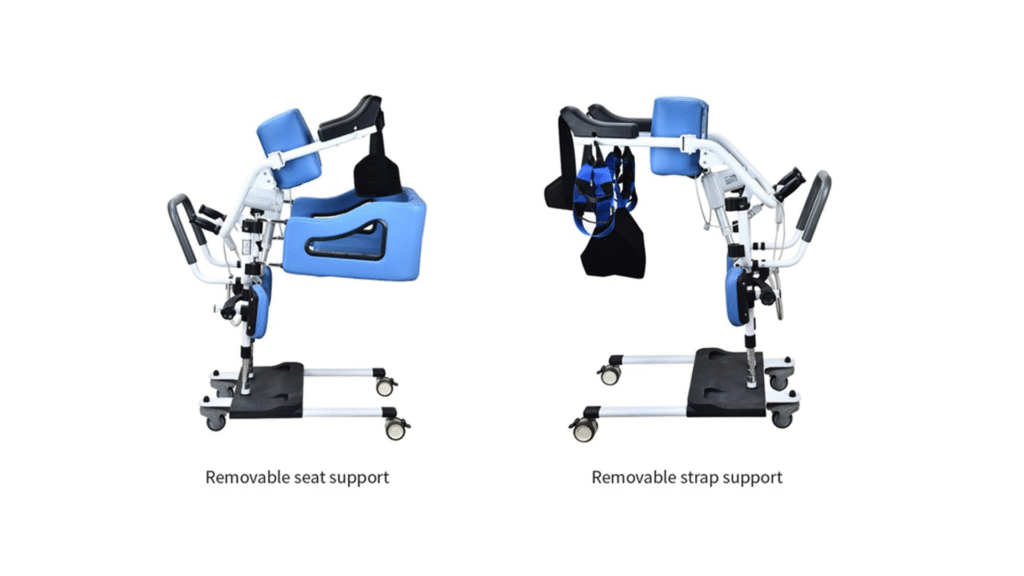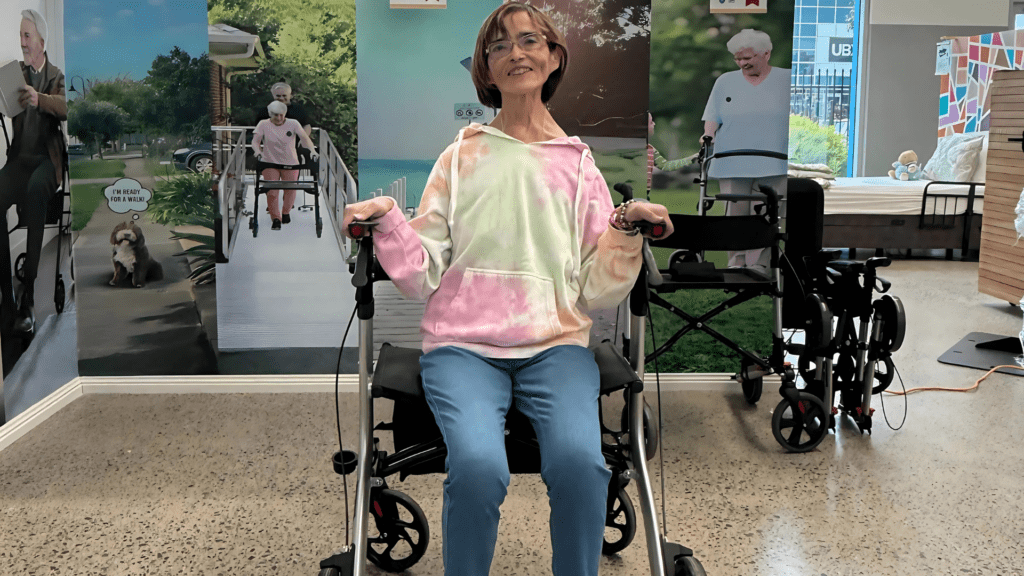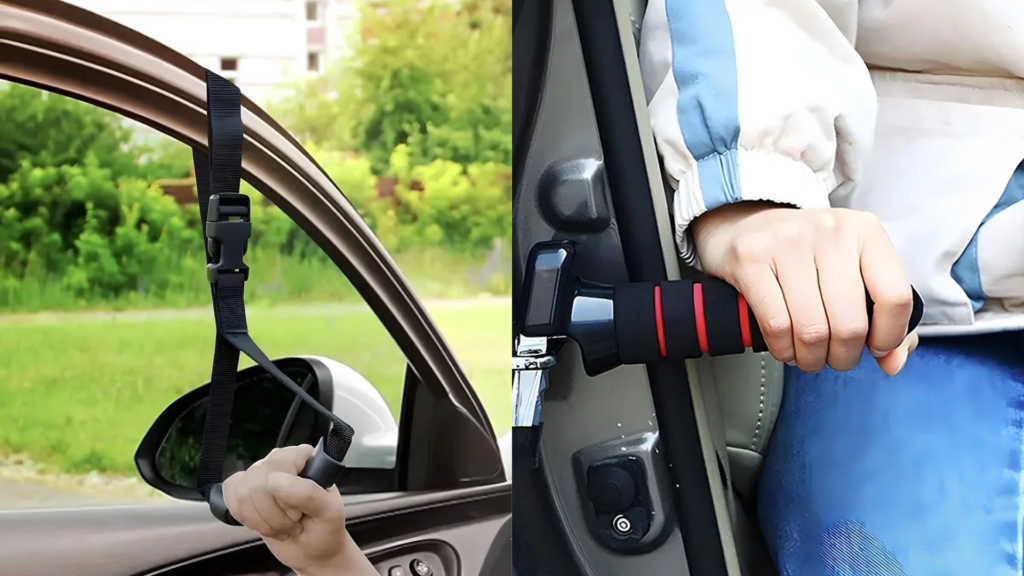A sling lifter is only as effective as the sling attached to it. Whether used in home care, aged care, or clinical settings, selecting the correct patient lifter sling is essential for safety, comfort, and ease of transfer.
This guide covers everything carers, OTs, and support teams need to know when choosing the right sling—covering sizing, styles, patient needs, compatibility, and funding options.
Why Sling Fit and Fabric Matter
A well-fitted sling reduces the risk of falls, skin damage, and discomfort during transfers. Poorly selected slings can lead to:
- Pressure injuries
- Discomfort in underarms, thighs, or lower back
- Difficulty in positioning or toileting
- Reduced confidence during lift and transfer
Fabric Types to Consider
- Mesh slings: Breathable and ideal for showering or extended use
- Padded slings: Added comfort for sensitive skin or long sits
- Wipe-clean slings: Suitable for infection control environments
Fabric also affects drying time, hygiene maintenance, and comfort for bariatric or frail users.
Types of Patient Slings and Use Cases
Different slings serve different functions based on patient mobility, weight distribution, and transfer needs.
| Sling Type | Best For |
| Full Body Sling | Total lift support; non-weight bearing patients |
| Hammock Sling | Secure lifting; evenly distributes weight for those with poor trunk control |
| Toileting Sling | Enables hygiene access; requires some trunk stability |
| Sit-to-Stand Sling | Used with sit-to-stand patient lifters; partial weight-bearing users |
| Bariatric Sling | Designed for heavier users; reinforced stitching and fabric |
| Amputee Sling | Provides additional leg support and balance for single/double amputees |
Explore compatible hoists and lifters in our Patient Lifter Collection.
Choosing Based on Mobility, Weight and Condition
Before choosing a sling, consider:
1. Mobility Level
- Non-mobile users benefit from full body or hammock slings
- Users with partial standing ability may prefer sit-to-stand options
- Semi-weight-bearing individuals may suit toileting slings with trunk support
2. Weight and Size
- Always check safe working load (SWL) of the sling
- Bariatric patients require heavy-duty slings with strong clips or loops
- Children or petite adults need correctly fitted paediatric or small-size slings
3. Health Conditions
- Fragile skin: Choose padded or seamless slings
- Incontinence: Use breathable mesh or easy-clean options
- Recent surgery or spinal issues: Use supportive, full-contact slings
Sling Size and Compatibility Checklist
Sling sizing typically includes Small, Medium, Large, and Extra-Large, but always refer to the manufacturer’s sizing chart. Ill-fitting slings can cause unsafe transfers or discomfort.
Sling Sizing Tips
- Shoulders to coccyx: Measure torso length
- Hip width and thigh length: Ensure strap placement avoids pinching
- Check label: Sizing, SWL, serial number, and inspection dates should be visible
Compatibility Essentials
- Match sling loop or clip type to the lifter
- Check brand compatibility, especially for motorised or ceiling systems
- Ensure sling strap length and spreader bar configuration suit the hoist model
Use our Product Enquiry Form to confirm compatibility or get OT-approved recommendations.
Maintenance, Hygiene, and Funding Notes
Proper care of lifting slings extends their lifespan and ensures ongoing safety.
Maintenance Checklist
- Inspect regularly for wear, fraying, or stitching damage
- Follow wash instructions—some slings are machine washable, others require disinfectant wipe-downs
- Replace slings as per OT recommendation or manufacturer guidelines (often every 6–12 months)
Funding Support
- NDIS and SWEP Victoria support sling purchases under Assistive Technology
- OT assessments are required for submission
- Hygiene items like slings may be funded more frequently due to wear or infection control protocols
Need help applying for sling funding or submitting a quote? Contact our team for NDIS or SWEP assistance.
Conclusion
Choosing the right patient lifter sling is just as important as choosing the lifter itself. From fit and material to function and funding, sling selection affects user safety, dignity, and carer ease.
- Match the sling to the patient’s body type, condition, and mobility
- Confirm lifter compatibility and load rating
- Use OT advice and regular maintenance to ensure ongoing safe use
- Explore funding options through NDIS or SWEP Victoria
- View our patient lifters and slings
- Submit a product enquiry
- Speak with our team for OT-guided support
Frequently Asked Questions (FAQs)
- What’s the difference between loop and clip slings?
Loop slings attach to hook-type spreader bars; clip slings require specific clip-style lifters. Always match the sling to your lifter’s mechanism. - How often should slings be replaced?
Slings should be inspected regularly and typically replaced every 6–12 months, or sooner if damaged or worn. - Can I wash lifting slings at home?
Most fabric slings are machine washable, but always follow care instructions. Do not bleach or iron unless stated. - Is an OT assessment needed to choose a sling?
Yes. OTs assess the individual’s needs and recommend the correct sling type, size, and lifter pairing. This is essential for NDIS/SWEP funding. - Can the same sling be used for multiple people?
No. For hygiene and safety reasons, slings should be individualised—especially in aged care or clinical settings.



